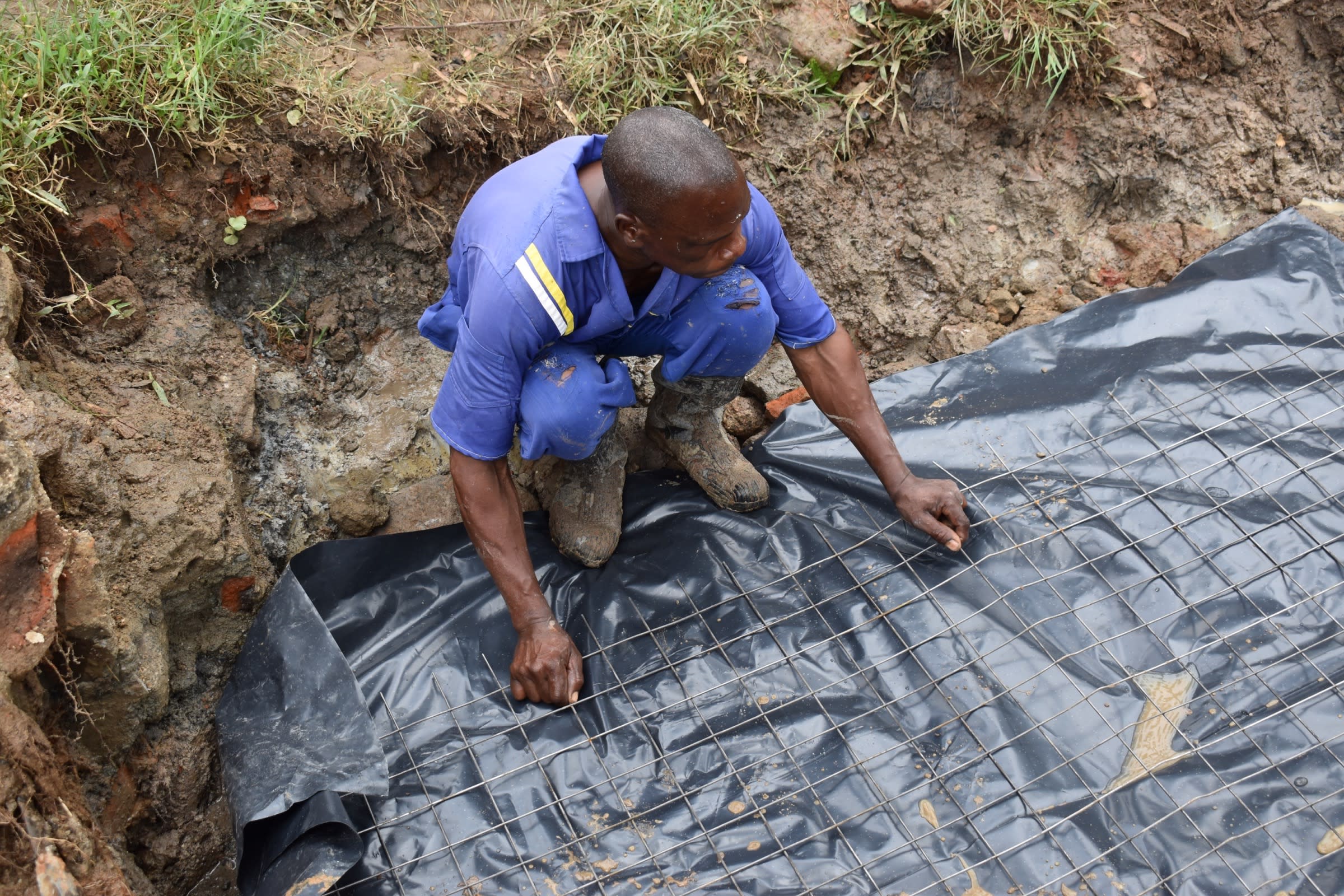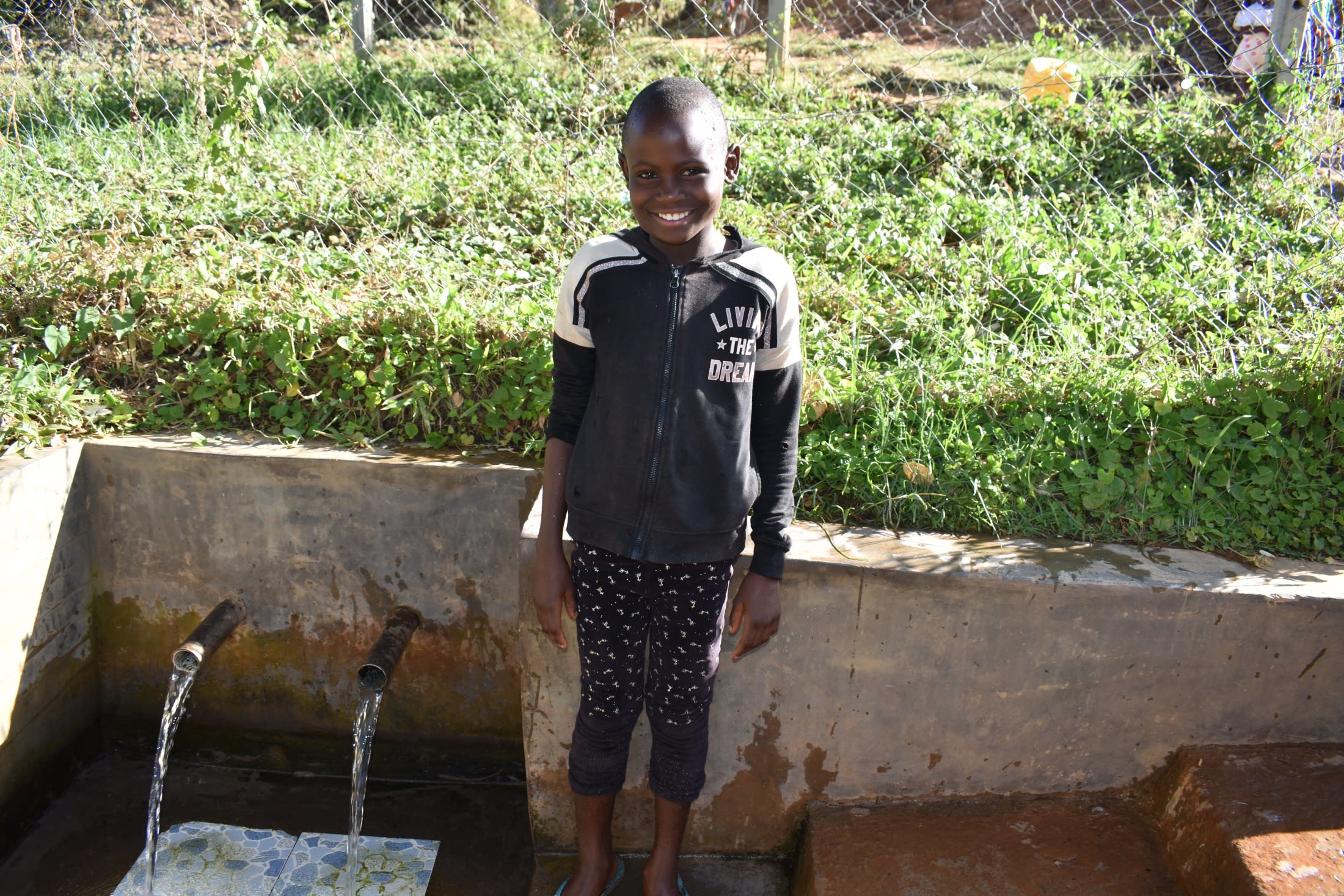Without someone pointing it out, one might mistake unprotected Davis Mamuti Spring for merely a puddle among the grass. For the 210 people living in Machemo who depend on this spring as their only source of water, however, they know this spring all too well as a reliable yet highly contaminated and difficult to access water source.
Davis Mamuti Spring is located in a rural area where the environment is cool and wet during the rainy season. There are many trees in the area, and when combined with the large amount of fertile land community members farm, the landscape appears lush. During the dry season, which was ongoing during our most recent visit, the roads to the village are dusty and have a lot of potholes.
Each morning, the first thing women and children do is head to the spring to fetch water. Families use this first round of water for house chores, watering plants, and giving to their livestock. People continue to visit the spring throughout the day and into the evening to collect enough water for all of their drinking, cooking, and cleaning needs.
The spring's difficult access area slows community members down, wasting their time and delaying the day's activities. The spring water flows out across a relatively flat grassy patch of land, creating a slippery and muddy area on all sides of the spring. To fetch water, people have to lay down their jerrycans into the mud to try to submerge their openings, if possible. Everyone has to at least top off their jerricans using smaller jugs to scoop water off the ground that they then pour into their larger containers. People cannot fetch water too quickly or they risk stirring up too much mud, forcing them to wait even longer while the water settles before they can begin fetching again.
"The devastating moment I had at the water point was when I went to fetch water after it had rained. I slid and fell down, dislocating my left foot. If we had good accessibility, then I would not have had such a bad experience. I am hopeful that the project will be implemented so as we can have a safe place where we can get clean, quality water," said Robai Nasimiyu.
The scoop-pour method of fetching water is tiring and time-consuming. For women especially, the amount of time they spend fetching water often prevents them from finding day labor jobs that would give them income. As a result, most women here are restricted to childcare and household chores while they remain economically dependent on their husbands, despite having their own development goals.
As an open water source, the spring water is not safe for human consumption. Aside from the grass growing in it, there is algae and of course the mud coating the bottom of the spring. Animals walk through and drink from the water, while runoff from the rains carry more soil, animal waste, and farm chemicals into the water. Added to this are any bacteria and dirt on community members' hands, feet, and containers as they step in the water to fetch it.
"The situation at the water point is not pleasing, thus making the water dirty more often. In our school, we use white shirts which, when I wash them with this water, turn to a different color. I would be happy if we will be helped to get safe and clean water," said young teenager Davis.
The most frequently reported health effects among community members who depend on this spring include diarrhea, typhoid, and cholera. Most of the diarrhea cases occur in children. Families drain their financial resources seeking medication for these diseases which are expensive to treat and often long-lasting.
What We Can Do:
Spring Protection
Protecting the spring will help provide access to cleaner and safer water and reduce the time people have to spend to fetch it. Construction will keep surface runoff and other contaminants out of the water. With the community’s high involvement in the process, there should be a good sense of responsibility and ownership for the new clean water source.
Fetching water is a task predominantly carried out by women and young girls. Protecting the spring and offering training and support will, therefore, help empower the female members of the community by freeing up more of their time and energy to engage and invest in income-generating activities and their education.
Training on Health, Hygiene, COVID-19, and More
To hold trainings during the pandemic, we work closely with both community leaders and the local government to approve small groups to attend training. We ask community leaders to invite a select yet representative group of people to attend training who will then act as ambassadors to the rest of the community to share what they learn. We also communicate our expectations of physical distancing and wearing masks for all who choose to attend.
The training will focus on improved hygiene, health, and sanitation habits in this community. We will also have a dedicated session on COVID-19 symptoms, transmission routes, and prevention best practices.
With the community’s input, we will identify key leverage points where they can alter their practices at the personal, household, and community levels to affect change. This training will help to ensure participants have the knowledge they need about healthy practices and their importance to make the most of their water point as soon as water is flowing.
Our team of facilitators will use a variety of methods to train community members. Some of these methods include participatory hygiene and sanitation transformation, asset-based community development, group discussions, handouts, and demonstrations at the spring.
One of the most important issues we plan to cover is the handling, storage, and treatment of water. Having a clean water source will be extremely helpful, but it is useless if water gets contaminated by the time it is consumed. We and the community strongly believe that all of these components will work together to improve living standards here, which will help to unlock the potential for these community members to live better, healthier lives.
We will then conduct a small series of follow-up trainings before transitioning to our regularly scheduled support visits throughout the year.
Training will result in the formation of a water user committee, elected by their peers, that will oversee the operations and maintenance of the spring. The committee will enforce proper behavior around the spring and delegate tasks that will help preserve the site, such as building a fence and digging proper drainage channels. The fence will keep out destructive animals and unwanted waste, and the drainage will keep the area’s mosquito population at a minimum.

 Protected Spring
Protected Spring
 Rehabilitation Project
Rehabilitation Project




































